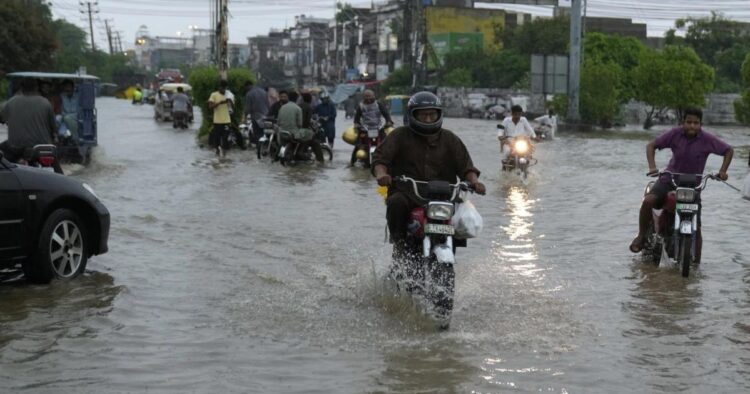Heavy rains in Pakistan have led to a devastating toll, with at least 35 people reported dead and 50 others injured. The rains, which began on Thursday, triggered numerous disasters including house collapses and landslides, particularly in the northwest region of the country.
The province of Khyber Pakhtunkhwa, bordering Afghanistan, bore the brunt of the fatalities, with 30 rain-related deaths reported since Thursday night. Among the victims were women and children, according to the provincial disaster management authority.
In the southwestern province of Balochistan, five people lost their lives as the coastal town of Gwadar experienced flooding. Approximately 10,000 people were evacuated by boats, with 700 homes damaged, as reported by Sarfraz Bugti, the chief minister of Balochistan.
Casualties and extensive damage were also witnessed in Pakistan-administered Kashmir, as stated by the National Disaster Management Authority.
Emergency relief efforts are underway, with authorities providing assistance to affected areas and employing heavy machinery to clear debris obstructing highways. The Pakistan army has distributed food rations to over 1,300 households and established medical camps to treat the injured.
In the northern Gilgit Baltistan region, the Karakoram Highway, vital for connecting Pakistan with China, remains blocked in certain areas due to landslides, as reported by spokesperson Faizullah Faraq. Tourists have been advised against traveling to the scenic north due to hazardous weather conditions.
Pakistan’s vulnerability to climate change is highlighted, despite its minimal contribution to global carbon emissions. The delay in winter rains this year, starting in February instead of November, underscores the country’s susceptibility to erratic weather patterns.
Every year, Pakistan faces damage from monsoon and winter rains. In 2022, unprecedented monsoon rains and flooding claimed nearly 1,800 lives, affected 33 million people, and displaced approximately eight million. The economic impact was substantial, with billions of dollars in damage, and many displaced individuals still residing in makeshift shelters from the previous year’s devastation.
The recent calamity serves as a reminder of the urgent need for climate adaptation and mitigation measures to safeguard vulnerable communities in Pakistan against future disasters.

















Comments